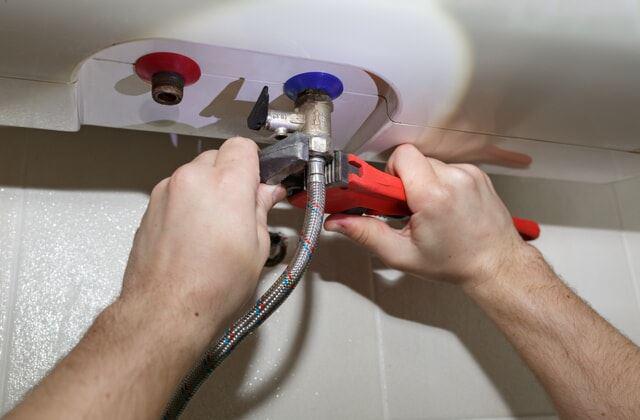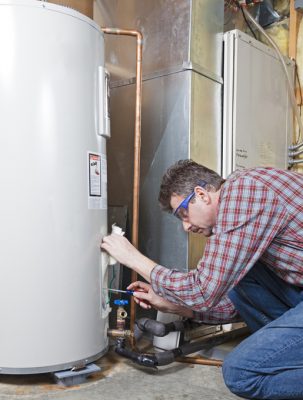We've found this great article pertaining to Water Heater Maintenance Tips You Can't Afford to Forget below on the internet and figured it made sense to quickly share it with you on this page.

Warm water is important for day-to-day convenience, whether it's for a refreshing shower or cleaning dishes. To guarantee your warm water system runs efficiently and lasts much longer, routine upkeep is essential. This article gives useful tips and understandings on how to preserve your home's hot water system to stay clear of interruptions and expensive repairs.
Intro
Preserving your home's warm water system might appear complicated, but with a few simple actions, you can ensure it runs efficiently for many years to come. This overview covers everything from recognizing your hot water system to DIY upkeep suggestions and knowing when to call expert help.
Relevance of Preserving Your Hot Water System
Normal maintenance not only expands the lifespan of your warm water system however also ensures it runs efficiently. Ignoring maintenance can bring about reduced performance, higher power bills, and also early failure of the system.
Indicators Your Hot Water System Demands Maintenance
Recognizing when your hot water system requires attention can stop major problems. Look out for indicators such as inconsistent water temperature level, strange sounds from the heating unit, or rusty water.
Flushing the Hot Water Heater
Flushing your hot water heater removes sediment build-up, enhancing performance and lengthening its life.
Checking and Changing Anode Rods
Anode rods stop corrosion inside the storage tank. Evaluating and replacing them when worn is important.
Facility Issues Needing Professional Assistance
Instances include major leaks, electric troubles, or if your water heater is constantly underperforming.
Routine Expert Upkeep Benefits
Expert upkeep can consist of detailed evaluations, tune-ups, and making sure conformity with safety requirements.
Evaluating and Changing Temperature Level Settings
Changing the temperature level setups makes certain optimal performance and safety and security.
DIY Tips for Maintenance
You can do numerous maintenance tasks yourself to keep your warm water system in leading condition.
Checking for Leakages
Frequently evaluate pipes and links for leaks, as these can result in water damage and higher expenses.
Recognizing Your Warm Water System
Before diving into maintenance tasks, it's useful to comprehend the fundamental elements of your warm water system. Commonly, this consists of the hot water heater itself, pipelines, anode poles, and temperature controls.
Regular Monthly Upkeep Tasks
Normal month-to-month checks can assist catch minor issues prior to they intensify.
Evaluating Pressure Alleviation Valves
Checking the stress relief valve ensures it works appropriately and prevents extreme pressure build-up.
Shielding Pipelines
Insulating hot water pipelines minimizes heat loss and can conserve power.
When to Call an Expert
While do it yourself upkeep is useful, some problems require professional experience.
Conclusion
Normal upkeep of your home's hot water system is crucial for effectiveness, longevity, and expense savings. By following these ideas and knowing when to seek specialist assistance, you can make certain a reputable supply of warm water without unexpected interruptions.
How to Maintain an Instant Hot Water Heater
Before tinkering with your hot water heater, make sure that it’s not powered on. You also have to turn off the main circuit breaker and shut off the main gas line to prevent accidents. Also turn off the water valves connected to your unit to prevent water from flowing into and out of the appliance. 2. When you’re done, you have to detach the purge valves’ caps. These look like the letter “T” and are situated on either side of the water valves. Doing so will release any pressure that has accumulated inside the valves while at the same time avoid hot water from shooting out and burning your skin. 3. When the purge valves’ caps are removed, you have to connect your hosing lines to the valves. Your unit should have come with three hoses but if it didn’t, you can purchase these things from any hardware or home repair shops. You can also get them from retail stores that sell water heating systems. Read the user’s manual and follow it to complete this task properly. When the hosing lines are connected, open the purge port’s valves. 4. You should never use harsh chemical cleaners or solutions when cleaning your unit. Make use of white vinegar instead. It should be undiluted and you’ll probably use about 2 gallons. 5. Now flush your water heater. This task should probably take about 40 minutes. We can’t give you specific directions for this because the procedure is carried out depending on the type, model and brand of your heater. With that being said, refer to the user’s manual. 6. When you’re done draining the unit, you have to turn off the purge port valves again. Remove the hosing lines that you earlier installed on each of the water valves. Put the valve caps (purge port) back in their respective places and be very careful so as not to damage the rubber discs that are found inside these caps. 7. Now that everything’s back in place, check your user’s manual again to find out how to reactivate your water heating system. 8. Once it is working, turn one of your hot water faucets on just to let air pass through the heater’s water supply pipes. Leave the tap on until water flows smoothly out of it. https://www.orrplumbing.com/blog/2014/september/how-to-maintain-an-instant-hot-water-heater/

I recently found that blog posting on Water Heater Maintenance Tips You Can't Afford to Forget when surfing around the search engines. Do you know somebody who is sincerely interested in the topic? Do not hesitate to share it. Thanks a lot for your time. Don't forget to come visit our site back soon.
Book A Service